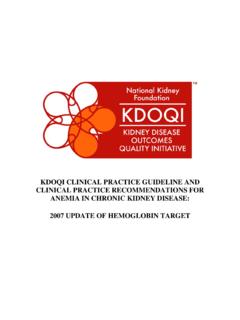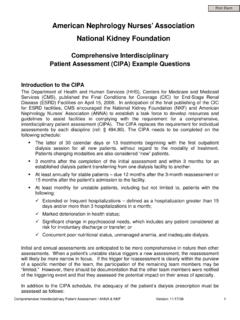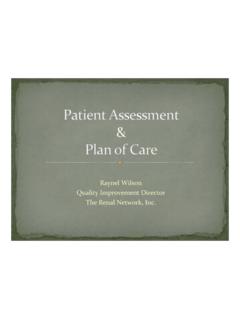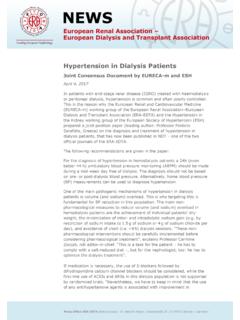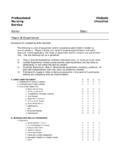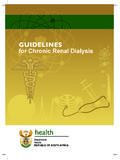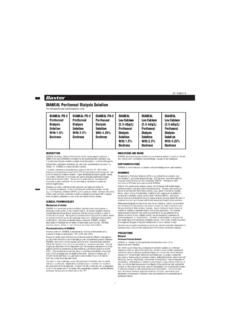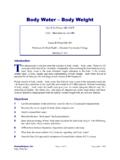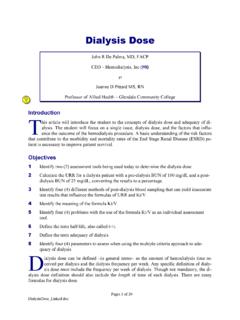Transcription of ESRD Special Study - The Renal Network
1 Delivery of dialysis Treatment Within the Long Term Care Facility esrd Special Study Delivery of dialysis Treatment Within the Long-Term Care Facility Project Report July 1, 2005 June 30, 2006 Contract # 500-03-NW09 June 30, 2006 Submitted to: Glenda Payne Marion Broderick Project Officer Project Officer CMS, Region VI CMS, Region VII Division of Clinical Standards & Quality Division of Clinical Standards & Quality 1301 Young Street New Federal Office Building Dallas, TX 75202 601 E 12th Street, Room 242 Kansas City, MO 64106 Submitted by: The Renal Network , Inc. esrd Network 9/10th 911 E.
2 86 Street, Suite 202 Indianapolis, IN 46240 317-257-8265 Janeen Le n, Project Manager Mary Ann Webb, MSN, RN, CNN Susan Stark, Executive Director Jenny Kitsen, Executive Director esrd Network of New England The Renal Network , Inc. 911 E. 86th Street, Suite 202 Indianapolis, IN 46240 317-257-8265 esrd Network of New England 30 Hazel Terrace Woodbridge, CT 06525 203=387-9332 The Renal Network , Inc. Special Project on the Delivery of dialysis Treatment Within the Long-Term Care Facility Table of Contents Executive 1 Literature 1 1 Project 2 The Need for dialysis for LTC Facility 2 The Need for Staff-Assisted dialysis Within a LTC Facility 2 Current esrd 3 Approved Facility 3 Billing 3 Back-up Facility 4 Staffing 4 Facility Oversight 5 dialysis and 5 Proposed Conditions for 5 LTC Facility esrd Patient 7 Other 8 National Renal Administrators Association 9 TRN dialysis in Nursing Homes 9
3 Technical Expert Panel (TEP).. 10 Recommendations for Staff-Assisted dialysis in the LTC Facility 11 11 Recommended Program 11 Minimum Staffing, Staff Qualifications and Training 12 12 Nurse Responsible for dialysis Subunit 12 On-Site 13 Patient Care 13 Other 14 Patient esrd Care 14 Patient esrd Care Plan of 15 Access to 15 Vascular Access 15 Infection 15 16 End of Life 16 Physical 16 Water 16 Coordination of 16 LTC Facility 16 esrd Provider 17 Emergencies During dialysis 17 Back-up Treatment 17 17 17 Internal 18 External 18 System for Data 18 Certification 18 Financial Model 19 19 Technical Expert Panel, Consultants.
4 Staff & 20 21 ii dialysis in the LTC Facility Project Report Executive Summary The Centers for Medicare & Medicaid Services (CMS) contracted with The Renal Network , Inc. (End Stage Renal Disease ( esrd ) Network 9/10) in collaboration with The esrd Network of New England, Inc ( Network 1) for a Special project to convene a Technical Expert Panel (TEP) to develop recommendations for providing dialysis in the long-term care facility. The need for more information focusing on quality of care, financial responsibilities and structural issues was identified following a meeting of Renal stakeholders in June 2004.
5 Convening a nationally focused Technical Expert Panel to develop recommendations for providing dialysis in a nursing home that ensures quality of care for these patients represents an important first step in benefiting esrd patients residing in LTC facilities. The model defined in this project will begin to provide the benchmark for quality dialysis services within the LTC facility. The contract period was from July1, 2005 to June 30, 2006. The contract specified nine key tasks to be completed within the 12-month timeframe. Task Task Requirement 1 Submit a detailed work plan to CMS 2 Conduct a focused literature review 3 Identify a Technical Expert Panel 4 Arrange TEP meeting 5 Facilitate and Document TEP discussions 6 Document proposed recommendations 7 Obtain input from Renal community 8 Prepare Final Report 9 Obtain TEP evaluations Literature Review Methods A MEDLINE search was conducted to review the literature to gain an understanding of the current knowledge of the care and dialysis of esrd patients in the nursing home.
6 The MESH term dialysis was combined with nursing home, skilled nursing facility, long term care facility, and hospice. The table below lists total number of citations for each combination, number of unique citations, and number of possibly relevant citations based on abstract review. There was substantial overlap between search results. Search Terms Total Citations Cited in Other Search Possibly Relevant Nursing home and dialysis 54 0 39 Extended care facility and dialysis 13 11 1 Skilled nursing facility and dialysis 11 11 0 Long term care facility and dialysis 12 4 4 Hospice and dialysis 24 1 9 Each possibly relevant article was retrieved and references were reviewed to yield additional relevant articles.
7 All relevant articles were abstracted and categorized into a customized database. Current esrd program requirements were obtained from documents available on the CMS website and from the Code of Federal Regulations (CFR). Note: For convenience, the term long-term care (LTC) facility will be used throughout this document to represent the terms skilled nursing facility, long-term care facility, extended care facility, and nursing home. 1 dialysis in the LTC Facility Project Report Project Background There are increasing numbers of dialysis patients throughout the United States being dialyzed within LTC facilities, however there are no officially recognized models of treatment.
8 A conference hosted by Network 9/10 in June 2004 resulted in the successful collaboration of dialysis providers, state agencies, Networks and CMS and identified the need for a structure of quality management for patients receiving dialysis in a LTC facility. This conference only touched on describing the parameters for a model delivery system for dialysis in residential Knowledge of dialysis in the LTC facility would benefit the esrd program and its patients. The goal of this project was to develop recommendations for providing dialysis in a LTC facility environment that ensures quality of care for these patients.
9 The Need for dialysis for LTC Facility Residents There were approximately million individuals residing in nursing homes in The 2004 USRDS Annual data report estimated that in 1999, 16,408 point prevalent esrd patients resided in LTC facilities. This represents of esrd This appears to be a growing trend. Data from a Study of esrd patients dialyzed in Network 5 between April 1990 and December 1991 suggested that a minimum of 1000 to 1500 esrd patients reside in nursing homes at any given time. The authors estimated that 2000 to 3000 esrd patients enter a nursing home in the United States each Elderly individuals without esrd recruited from hospital geriatric wards and nursing homes were surveyed to determine their desire for dialysis treatment should they need it.
10 Eighty-three percent of nursing home residents indicated they would want dialysis if it became necessary and 75% said they would prefer home The need for dialysis services to LTC facility residents is likely to grow as both the general and esrd populations continue to 6-10 The Need for Staff-Assisted dialysis Within a LTC Facility Setting LTC facility patients may be transported to hospital-based or freestanding dialysis facilities for treatment or obtain self- dialysis treatment through a home program. Transporting LTC facility patients to off-site dialysis facilities is burdensome to both patients and LTC facilities.


